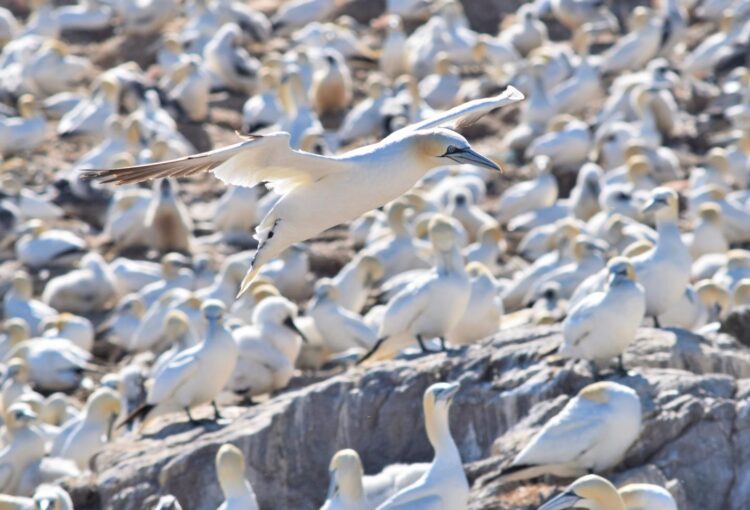
Credit: Dr Bethany Clark
Female gannets travel further than male gannets to find fish for their chicks in some years but not others, new research shows.
Scientists tracked breeding gannets from Grassholm Island in Wales over 11 years with tiny GPS devices and by measuring isotopic signatures in their blood.
Male gannets flew an average of 220km to forage for their chicks, while females averaged 260km. Some birds travelled 1,000km on a single trip.
The scientists also found that the two sexes selected different habitats and foraged at different times of day, but some years they were more in sync.
Dr Bethany Clark worked on the research during her PhD at the University of Exeter’s Environmental and Sustainability Institute, and now works at BirdLife International.
“Our study used GPS tracking to investigate behaviour and stable isotopes revealed information about their diet,” she said.
“The foraging differences we found might indicate that males and females respond differently to changes in environmental conditions, such as how windy it is.
“Their dietary preferences were more consistent over the years: males tended to eat larger fish from closer to shore than females.
“Our results highlight the importance of long-term studies.”
Stephen Votier, Professor of Seabird Ecology at the Lyell Centre, Heriot-Watt University, in Edinburgh said: “These birds are true ocean wanderers – travelling thousands of miles at sea throughout their lives to find food. It must be a pretty challenging four and half months raising their chicks each year.
“The sexes are virtually identical so differences are not due to size. Instead, we think males stay close to home because they establish and maintain the nest and perhaps because of subtle differences in taste.”
###
The study was funded by the Natural Environment Research Council and the European Union, and the fieldwork was made possible by the Royal Society for the Protection of Birds (RSPB).
The paper, published in the journal Marine Ecology Progress Series, is entitled: “Sexual segregation of gannet foraging over 11 years: movements vary but isotopic differences remain stable.”
Media Contact
Alex Morrison
[email protected]
Related Journal Article
http://dx.





